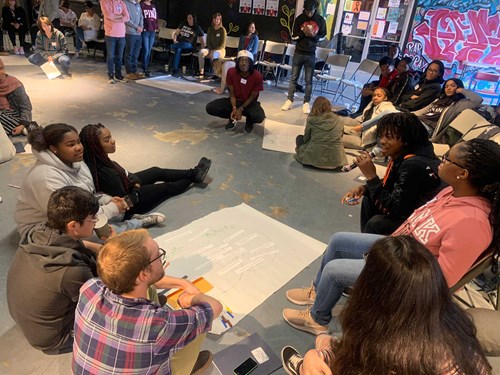The map estimates how licensed child care facilities have changed across Michigan, comparing data snapshots from September 2022, September 2023, September 2024, and today. Each provider with a unique license number is marked as a colored dot based whether it is new, closed, or open (i.e., no change in licensing status) since 2022. Open providers are classified as increasing, decreasing, and having no change in their estimate from September 2022 to today. When you hover over a dot, you will see the name and the license number of the provider. Additionally, the map can be filtered by zip codes, counties, and economic development organizations.
The number of licensed slots is estimated based on a provider's licensed total capacity and the ages they are licensed to serve. Information on licensed child care providers is updated daily from the Great Start to Quality database, which connects with Michigan’s Department of Licensing and Regulatory Affairs. Providers are labeled based on their license type (centers, family homes, and group homes). To assess how child care accessibility may differ across community settings, data were analyzed by Boston University’s overall Child Opportunity Index (an estimate of local resources available to support positive child development) and its sub-domain, Economic Opportunities (an estimation of local high-quality employment); these two variables range from “very low” to “very high”). Additionally, providers were labeled by their zip code’s geographic types (a city, suburb, or rural/town area) by the National Center for Education Statistics. You can select a zip code characteristic, which will darken all zip codes with that characteristic. Additionally, you can hover over a zip code to see its geographic type, overall Child Opportunity Index level, and Employment Opportunities level.
Please note the limitations and assumptions of these maps, summarized below:
- Only licensed providers are included in the current work. Unlicensed, license-exempt, and informal providers—which also contribute to the child care ecosystem—are excluded due to data unavailability.
- It is assumed that all families with children counted in the American Community Survey are seeking licensed child care and search only within their zip code or county.
- It is assumed that all providers are operating at full capacity. Estimates may not fully capture local nuances—such as temporary closures, changes in provider schedules, and uneven distribution of slots across age groups.
For a full list of definitions, methods, assumptions, limitations, and references, please click here to download the technical report.
These materials were developed under a grant awarded by the Michigan Department of Lifelong Education, Advancement, and Potential using Child Care Development Funds (CCDF).








